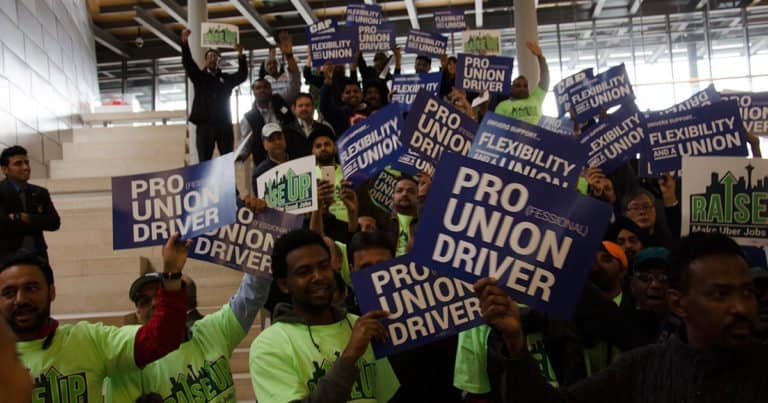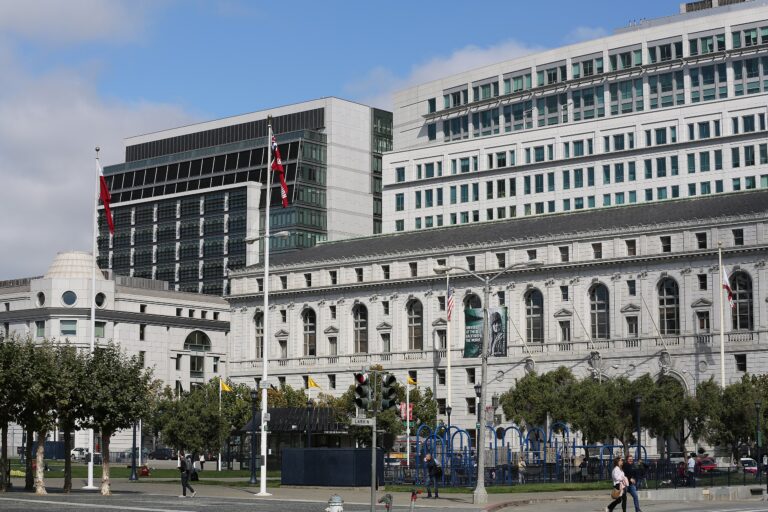Jake Rosenfeld is Associate Professor of Sociology at Washington University-St. Louis. He is the author of What Unions No Longer Do (Harvard University Press, 2014). For more on his work, see www.jakerosenfeld.net.
Jake Rosenfeld is Associate Professor of Sociology at the University of Washington and Co-Director of the Scholars Strategy Network Northwest. His book on the consequences of labor union decline, What Unions No Longer Do, is available from Harvard University Press.
The Supreme Court’s recent hearing of arguments in the Harris v. Quinn case along with ongoing attacks at the state-level has reminded many in the labor movement of the existential threat facing public sector unions. They have reasons for concern: after all, today the majority of union workers are employed in the public sector, marking a dramatic turnaround from just a few decades back. Lost amid the current worries over the future of public sector bargaining is what’s already gone missing, because it turns out that a labor movement dominated by government employees looks and acts differently than one rooted in the private sector. This sectoral shift has changed what it is that unions do for their members in fundamental ways.
Take wages. Raising members’ wages higher than they would be in the absence of collective bargaining is a core union function, and members in both the public and private sector enjoy a wage premium over their unorganized counterparts. But my research shows that this premium is much higher among private sector members than among those in the public sector. After comparing workers in similar occupations and industries, and with similar measures of human capital, in recent years private sector members enjoy union wage premiums nearly double those of public sector members.
Unions are not simply economic organizations, they are political ones too – and when it comes to core political functions again private sector unions prove more effective than public sector ones. For example, just as researchers speak of the union wage premium, or the wage benefit that accrues to a member by virtue of his or her membership, we can also speak of a union vote premium. The union vote premium refers to the difference in voting rates among persons with and without union membership who have observationally similar characteristics. That is, the union vote premium captures the effect of union membership on voting after we compare citizens with the same levels of education, who are the same age, and who reside in the same state – among many other characteristics correlated with voter turnout. Once we do so, the effect of union membership on voting is 2-3 times higher in the private sector compared to the public. In certain elections, there is no public sector union vote premium. In the high-turnout contest of 2008, for example, public sector union members voted at exactly the same rates as public sector nonmembers after adjusting statistically for their state of residence, education, age, and other relevant characteristics. The public sector union vote premium was zero.
Thus what unions do in the public sector differs from their roles in the private sector. Whom they represent differs as well. Four out of five public sector union members have at least some college experience, compared with just over half of private sector members. Given this difference in educational attainment, it should come as no surprise that governmental employees who are organized outearn members in the private sector. One of the core findings of my research is that in generations past the labor movement played a vital role supporting the economic and civic advancement of historically disadvantaged populations. A labor movement dominated by the public sector simply isn’t able to fulfill this vital function.






Daily News & Commentary
Start your day with our roundup of the latest labor developments. See all
October 20
Supreme Court won't review SpaceX decision, courts uphold worker-friendly interpretation of EFAA, EEOC focuses on opioid-related discrimination.
October 19
DOL issues a new wage rule for H-2A workers, Gov. Newsom vetoes a bill that regulates employers’ use of AI, and Broadway workers and management reach a tentative deal
October 17
Third Circuit denies DOL's en banc rehearing request; Washington AG proposes legislation to protect immigrant workers; UAW files suit challenging government surveillance of non-citizen speech
October 16
NLRB seeks injunction of California’s law; Judge grants temporary restraining order stopping shutdown-related RIFs; and Governor Newsom vetoes an ILWU supported bill.
October 15
An interview with former NLRB chairman; Supreme Court denies cert in Southern California hotel case
October 14
Census Bureau layoffs, Amazon holiday hiring, and the final settlement in a meat producer wage-fixing lawsuit.